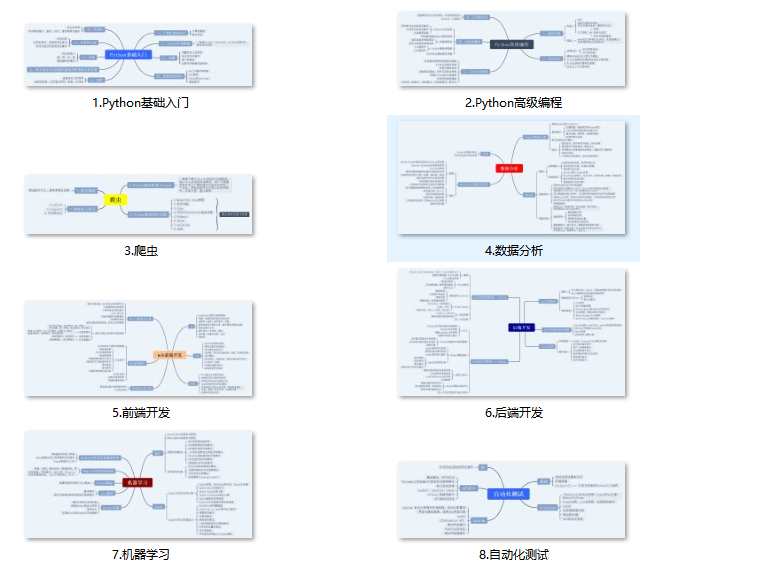–subdirs=SUBDIRS Scan sub-directories of the given URL[s] (separated by
commas)
–exclude-subdirs=SUBDIRS
Exclude the following subdirectories during recursive
scan (separated by commas)
-i CODES, --include-status=CODES
Include status codes, separated by commas, support
ranges (e.g. 200,300-399)
-x CODES, --exclude-status=CODES
Exclude status codes, separated by commas, support
ranges (e.g. 301,500-599)
–exclude-sizes=SIZES
Exclude responses by sizes, separated by commas (e.g.
0B,4KB)
–exclude-text=TEXTS
Exclude responses by text, can use multiple flags
–exclude-regex=REGEX
Exclude responses by regular expression
–exclude-redirect=STRING
Exclude responses if this regex (or text) matches
redirect URL (e.g. ‘/index.html’)
–exclude-response=PATH
Exclude responses similar to response of this page,
path as input (e.g. 404.html)
–skip-on-status=CODES
Skip target whenever hit one of these status codes,
separated by commas, support ranges
–min-response-size=LENGTH
Minimum response length
–max-response-size=LENGTH
Maximum response length
–max-time=SECONDS Maximum runtime for the scan
–exit-on-error Exit whenever an error occurs
Request Settings:
-m METHOD, --http-method=METHOD
HTTP method (default: GET)
-d DATA, --data=DATA
HTTP request data
–data-file=PATH File contains HTTP request data
-H HEADERS, --header=HEADERS
HTTP request header, can use multiple flags
–headers-file=PATH
File contains HTTP request headers
-F, --follow-redirects
Follow HTTP redirects
–random-agent Choose a random User-Agent for each request
–auth=CREDENTIAL Authentication credential (e.g. user:password or
bearer token)
–auth-type=TYPE Authentication type (basic, digest, bearer, ntlm, jwt)
–cert-file=PATH File contains client-side certificate
–key-file=PATH File contains client-side certificate private key
(unencrypted)
–user-agent=USER_AGENT
–cookie=COOKIE
Connection Settings:
–timeout=TIMEOUT Connection timeout
–delay=DELAY Delay between requests
-p PROXY, --proxy=PROXY
Proxy URL (HTTP/SOCKS), can use multiple flags
–proxies-file=PATH
File contains proxy servers
–proxy-auth=CREDENTIAL
Proxy authentication credential
–replay-proxy=PROXY
Proxy to replay with found paths
–tor Use Tor network as proxy
–scheme=SCHEME Scheme for raw request or if there is no scheme in the
URL (Default: auto-detect)
–max-rate=RATE Max requests per second
–retries=RETRIES Number of retries for failed requests
–ip=IP Server IP address
Advanced Settings:
–crawl Crawl for new paths in responses
View Settings:
–full-url Full URLs in the output (enabled automatically in
quiet mode)
–redirects-history
Show redirects history
–no-color No colored output
-q, --quiet-mode Quiet mode
Output Settings:
-o PATH/URL, --output=PATH/URL
Output file or MySQL/PostgreSQL URL (Format:
scheme://[username:password@]host[:port]/database-
name)
–format=FORMAT Report format (Available: simple,plain,json,xml,md,csv
,html,sqlite,mysql,postgresql)
–log=PATH Log file
See ‘config.ini’ for the example configuration file
翻译如下:
用法:dirsearch.py [-u|–url] 目标 [-e|–extensions] 扩展名 [选项]
选项:
–version 显示程序的版本号并退出
-h, --help 显示此帮助消息并退出
必需:
-u URL, --url=URL 目标URL,可以使用多个选项指定多个目标URL
-l PATH, --urls-file=PATH
URL列表文件
–stdin 从标准输入读取URL
–cidr=CIDR 目标CIDR
–raw=PATH 从文件加载原始HTTP请求(使用’–scheme’标志设置方案)
-s SESSION_FILE, --session=SESSION_FILE
会话文件
–config=PATH 配置文件路径(默认为’DIRSEARCH_CONFIG’环境变量,否则为’config.ini’)
字典设置:
-w WORDLISTS, --wordlists=WORDLISTS
单词列表文件或包含单词列表文件的目录(以逗号分隔)
-e EXTENSIONS, --extensions=EXTENSIONS
扩展名列表,以逗号分隔(例如:php,asp)
-f, --force-extensions
在每个单词列表条目的末尾添加扩展名。默认情况下,dirsearch只替换%EXT%关键字为扩展名。
-O, --overwrite-extensions
使用指定的扩展名覆盖单词列表中的其他扩展名(通过’-e’选择)
–exclude-extensions=EXTENSIONS
排除的扩展名列表,以逗号分隔(例如:asp,jsp)
–remove-extensions 删除所有路径中的扩展名(例如:admin.php -> admin)
–prefixes=PREFIXES 将自定义前缀添加到所有单词列表条目中(以逗号分隔)
–suffixes=SUFFIXES 将自定义后缀添加到所有单词列表条目中,忽略目录(以逗号分隔)
-U, --uppercase 单词列表转为大写
-L, --lowercase 单词列表转为小写
-C, --capital 单词首字母大写
通用设置:
-t THREADS, --threads=THREADS
线程数
-r, --recursive 递归地进行强制破解
–deep-recursive 在每个目录深度上执行递归扫描(例如:api/users -> api/)
–force-recursive 对找到的每个路径执行递归强制破解,而不仅仅是目录
-R DEPTH, --max-recursion-depth=DEPTH
最大递归深度
–recursion-status=CODES
用于执行递归扫描的有效状态码,支持范围(以逗号分隔)
–subdirs=SUBDIRS 扫描给定URL的子目录(以逗号分隔)
–exclude-subdirs=SUBDIRS
在递归扫描期间排除以下子目录(以逗号分隔)
-i CODES, --include-status=CODES
包括的状态码,以逗号分隔,支持范围(例如:200,300-399)
-x CODES, --exclude-status=CODES
排除的状态码,以逗号分隔,支持范围(例如:301,500-599)
–exclude-sizes=SIZES
根据大小排除响应,以逗号分隔(例如:0B,4KB)
–exclude-text=TEXTS 根据文本排除响应,可以使用多个标志
–exclude-regex=REGEX
根据正则表达式排除响应
–exclude-redirect=STRING
如果此正则表达式(或文本)与重定向URL匹配,则排除响应(例如:‘/index.html’)
–exclude-response=PATH
排除类似于此页面响应的响应,路径作为输入(例如:404.html)
–skip-on-status=CODES
每当命中这些状态码之一时跳过目标,以逗号分隔,支持范围
–min-response-size=LENGTH
响应的最小长度
–max-response-size=LENGTH
响应的最大长度
–max-time=SECONDS 扫描的最大运行时间
–exit-on-error 发生错误时退出
请求设置:
-m METHOD, --http-method=METHOD
HTTP请求方法(默认为GET)
-d DATA, --data=DATA HTTP请求数据
–data-file=PATH 包含HTTP请求数据的文件
-H HEADERS, --header=HEADERS
HTTP请求标头,可以使用多个标志
–headers-file=PATH 包含HTTP请求标头的文件
-F, --follow-redirects
跟随HTTP重定向
–random-agent 每个请求选择一个随机User-Agent
–auth=CREDENTIAL 认证凭据(例如:user:password或bearer token)
–auth-type=TYPE 认证类型(basic、digest、bearer、ntlm、jwt)
–cert-file=PATH 包含客户端证书的文件
–key-file=PATH 包含客户端证书私钥的文件(未加密)
–user-agent=USER_AGENT
–cookie=COOKIE
连接设置:
–timeout=TIMEOUT 连接超时时间
–delay=DELAY 请求之间的延迟
-p PROXY, --proxy=PROXY
代理URL(HTTP/SOCKS),可以使用多个标志
–proxies-file=PATH 包含代理服务器的文件
–proxy-auth=CREDENTIAL
代理认证凭据
–replay-proxy=PROXY 用于重放已发现路径的代理
–tor 使用Tor网络作为代理
–scheme=SCHEME 原始请求的协议或URL中没有协议时使用的协议(默认为自动检测)
–max-rate=RATE 每秒请求数最大值
–retries=RETRIES 失败请求的重试次数
–ip=IP 服务器IP地址
高级设置:
–crawl 在响应中爬取新路径
显示设置:
–full-url 在输出中显示完整URL(在静默模式下自动启用)
–redirects-history 显示重定向历史记录
–no-color 不使用彩色输出
-q, --quiet-mode 安静模式
输出设置:
-o PATH/URL, --output=PATH/URL
输出文件或MySQL/PostgreSQL数据库URL(格式:
scheme://[username:password@]host[:port]/database-
name)
–format=FORMAT 报告格式(可用:simple、plain、json、xml、md、csv、html、
sqlite、mysql、postgresql)
–log=PATH 日志文件
有关示例配置文件,请参见“config.ini”
---
### 常见Payload
1.扫描单个URL,并限制线程数和扩展名:
python dirsearch.py -u http://example.com -t 10 -e php,asp --exclude-extensions=html
该命令将对 `http://example.com` 进行目录扫描,使用最多 10 个线程并仅检查扩展名为 `php` 和 `asp` 的路径,同时排除扩展名为 `html` 的路径。
2.从URL列表文件中批量扫描:
python dirsearch.py -l urls.txt -t 5 -e php
该命令将从 `urls.txt` 文件中读取目标URL列表,并使用最多 5 个线程对每个URL进行目录扫描,仅检查扩展名为 `php` 的路径。
3.使用自定义字典和深度递归扫描:
python dirsearch.py -u http://example.com -w custom-wordlist.txt -r --deep-recursive
该命令将对 `http://example.com` 进行目录扫描,使用自定义的单词列表文件 `custom-wordlist.txt`,并启用深度递归扫描,即在每个目录的所有深度上执行递归扫描。
4.在请求中使用自定义HTTP头:
python dirsearch.py -u http://example.com -H “X-Custom-Header: Value” -H “Authorization: Bearer token”
该命令将对 `http://example.com` 进行目录扫描,并在每个请求中包含自定义的HTTP头,如 `X-Custom-Header` 和 `Authorization`。
5.指定线程数和延迟时间:
python dirsearch.py -u http://example.com -t 20 --delay 0.5
上述命令将使用20个线程并设置每个请求之间的延迟为0.5秒。
6.使用自定义的请求头和超时时间:
python dirsearch.py -u http://example.com -H “Custom-Header: value” --timeout 10
这个命令将在每个请求中添加一个自定义的请求头 “Custom-Header: value”,并将超时时间设置为10秒。
7.包含和排除特定状态码:
python dirsearch.py -u http://example.com -i 200,302 -x 404,500
上述命令将只包含状态码为200和302的响应,并排除状态码为404和500的响应。
8.使用代理进行扫描:
python dirsearch.py -u http://example.com -p http://127.0.0.1:8080
这个命令将通过指定的HTTP代理(例如Burp Suite)对目标URL进行扫描。
9.保存输出到文件中:
python dirsearch.py -u http://example.com -o output.txt
上述命令将扫描结果输出到指定的文件 `output.txt`。
10.使用代理链进行扫描:
python dirsearch.py -u http://example.com -p http://proxy1:8080 -p http://proxy2:8080
上述命令将通过两个代理服务器 `proxy1` 和 `proxy2` 进行目标URL的扫描。
11.从标准输入读取URL:
cat urls.txt | python dirsearch.py --stdin -t 10
这个命令通过管道从 `urls.txt` 中读取URL,并使用最多 10 个线程对每个URL进行目录扫描。
12.启用递归扫描和重定向跟随:
python dirsearch.py -u http://example.com -r -F
上述命令将启用目录的递归扫描,并且在扫描时跟随HTTP重定向。
13.排除指定大小范围的响应:
python dirsearch.py -u http://example.com --exclude-sizes 0-100B,500KB-1MB
该命令将排除大小在 0 到 100 字节以及 500千字节到 1 兆字节范围内的响应。
14.设定最大运行时间和最大重试次数:
python dirsearch.py -u http://example.com --max-time 300 --retries 5
上述命令将设置最长运行时间为 300 秒,并允许失败请求最多重试 5 次。
15.指定自定义的User-Agent头:
python dirsearch.py -u http://example.com --user-agent “Custom User Agent”
上述命令将在HTTP请求中指定自定义的User-Agent头。
16.使用代理认证进行扫描:
python dirsearch.py -u http://example.com -p http://proxy.example.com --proxy-auth “username:password”
这个命令将使用指定的代理服务器 `proxy.example.com` 进行扫描,并提供代理认证的用户名和密码。
17.启用递归扫描并限制最大递归深度:
python dirsearch.py -u http://example.com -r -R 5
上述命令将启用递归目录扫描,并限制最大递归深度为5层。
18.排除特定文本出现的响应:
python dirsearch.py -u http://example.com --exclude-text “Not Found” --exclude-text “Error”
该命令将排除响应中包含指定文本(如 “Not Found” 和 “Error”)的路径。
19.设置最小和最大响应长度:
python dirsearch.py -u http://example.com --min-response-size 1000 --max-response-size 50000
上述命令将只包含响应长度在1000到50000字节之间的路径。
---
**自我介绍一下,小编13年上海交大毕业,曾经在小公司待过,也去过华为、OPPO等大厂,18年进入阿里一直到现在。**
**深知大多数Python工程师,想要提升技能,往往是自己摸索成长或者是报班学习,但对于培训机构动则几千的学费,着实压力不小。自己不成体系的自学效果低效又漫长,而且极易碰到天花板技术停滞不前!**
**因此收集整理了一份《2024年Python开发全套学习资料》,初衷也很简单,就是希望能够帮助到想自学提升又不知道该从何学起的朋友,同时减轻大家的负担。**






**既有适合小白学习的零基础资料,也有适合3年以上经验的小伙伴深入学习提升的进阶课程,基本涵盖了95%以上前端开发知识点,真正体系化!**
**由于文件比较大,这里只是将部分目录大纲截图出来,每个节点里面都包含大厂面经、学习笔记、源码讲义、实战项目、讲解视频,并且后续会持续更新**
**如果你觉得这些内容对你有帮助,可以扫码获取!!!(备注Python)**
片转存中...(img-WIAXKufl-1712957896054)]
[外链图片转存中...(img-WNZGXQbq-1712957896054)]
[外链图片转存中...(img-u5dRpIYs-1712957896054)]


**既有适合小白学习的零基础资料,也有适合3年以上经验的小伙伴深入学习提升的进阶课程,基本涵盖了95%以上前端开发知识点,真正体系化!**
**由于文件比较大,这里只是将部分目录大纲截图出来,每个节点里面都包含大厂面经、学习笔记、源码讲义、实战项目、讲解视频,并且后续会持续更新**
**如果你觉得这些内容对你有帮助,可以扫码获取!!!(备注Python)**
<img src="https://img-community.csdnimg.cn/images/fd6ebf0d450a4dbea7428752dc7ffd34.jpg" alt="img" style="zoom:50%;" />
























 3万+
3万+

 被折叠的 条评论
为什么被折叠?
被折叠的 条评论
为什么被折叠?








